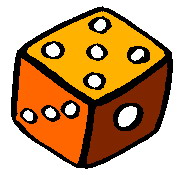During his NLP trainings, Richard Bandler speaks a lot about holograms and holographic thinking. This NLP article explains why thinking holographically is useful.
 Here are the notes on holographic thinking from a 1997 NLP Master Practitioner Training by Richard Bandler and John La Valle.
Here are the notes on holographic thinking from a 1997 NLP Master Practitioner Training by Richard Bandler and John La Valle.
A persons experience of reality is a holographic mental representation of reality and might not bear a one to one relationship with reality – it may be distorted. i.e. The map is not the territory and the map is holographic.
Thinking holographically everything that was, is and will be, (people, places, times, ideas, cultures, life forms, matter, energy) are all interconnected. Any change in one thing is reflected, to various degrees, in everything else. Thinking holographically, the “Problem” contains the “Changes” which become the tip of a “Greater Solution” waiting to emerge (as in one of my favorite speeches, by the late Dr. Norman Vincent Peale 1898-1993, “Problems Contain the Seeds of Their Own Solutions.”).
Holographic thinking can take a reality and change it!
Reality is made up of a number of elements that are all interconnected. This naturally produces a holographic structure. Realities are holographic structures that can be mentally viewed from 2 perspectives, from the inside out and from the outside in.
- Each of the elements may be comprised of other elements that are also interconnected to everything else.
To change reality:
- Determine which elements (these may be elements within an element) that, if changed, are most likely to produce changes in reality.
- Change, or replace with a different element, one or more of the elements to bring about changes in reality. Some elements have much greater impact on change than others, these are the key elements to change or replace.
- Test the changes by thinking of reality with the new changes and note how the reality changes.
- Repeat if needed, using some of the other elements, until the desired changes occur in reality.
NOTES:
- Reality, elements and changes are subjective.
- Observation skills are needed to notice changes.
- A way of quickly testing the results is to mentally review past and future reality with the changes.
Oops! Damn it! Shit!
These and other expressions of unexpected results, are direct evidence that someone’s holographic mental map sometimes doesn’t match the physical reality. Holographic thinking connects 7 dimensions of human experience; horizontal-(x), vertical-(y), depth-(Z), multiple perspective awareness, energy, time and thought.
Add this statement “and the consequences of that.” to each of the following examples.
- E.g. Change one of the elements in the telescope, change the view of the universe.
- E.g. Change one of the gene codes in corn, change the food we eat and how we farm it.
- E.g. Change one of the atoms in a molecule, change the nature of a substance.
- E.g. Change one of the beliefs someone has, change the reality of their experience.
- E.g. Change the location of one terrorist attack (USA-World Trade Center), change the attitude and policies of the world.
Surprise Surprise…
A pleasant surprise, is when you realize that something you value has been positively affected as an unforeseen consequence of choices you and others made in the past. An unpleasant surprise, is when you realize that something you value has been negatively affected as an unforeseen consequence of choices you and others made in the past.
Reality Is Like A Hologram
Each element of reality contains the information about everything else. All you do to know that information, is change the angle of your thinking.
For example: Pick an item, now think like an archeologist. What can you tell about the conditions that have had to exist for that item to exist? Look closely at every aspect of the item, think about the connections it has through time… to everything; the materials it’s made of, the manufacturing processes to make it, the level of technological sophistication, the resources that are used, distribution systems, environmental impact from resource sources through to item disposal, it’s uses, users, the users culture, society, communication abilities, etc.
That item really does reflect “everything”, even though we may not perceive all the connections. Similar to Stanly Milgram’s popular idea of Six Degrees of Separation which recent research now supports. This applies to ideas and concepts, as well as a single word. Consider this; if energy cannot be created nor destroyed, then the energy that item represents has been in existence since the beginning of the universe and will continue to exist until the end of it. The same applies to you, as you are an active transformation of energy.
Holographic Thinking Gets More Attention
As our ability to perceive the world around us has improved, so has our awareness of the holistic nature of our reality. For example, learning that toxic chemicals migrate through the food chain has changed the way chemicals are produced and used. Another example, is that many societies now consider it socially unacceptable to knowingly buy products that are produced in a way that harms the environment or abuses human rights.
In today’s world of live global reporting and public ability to access and publish on the global information network, many people make much more informed choices. People making decisions in government, business and at home, routinely consider more consequences than ever before. We continue to improve our ability to have only pleasant surprises.
